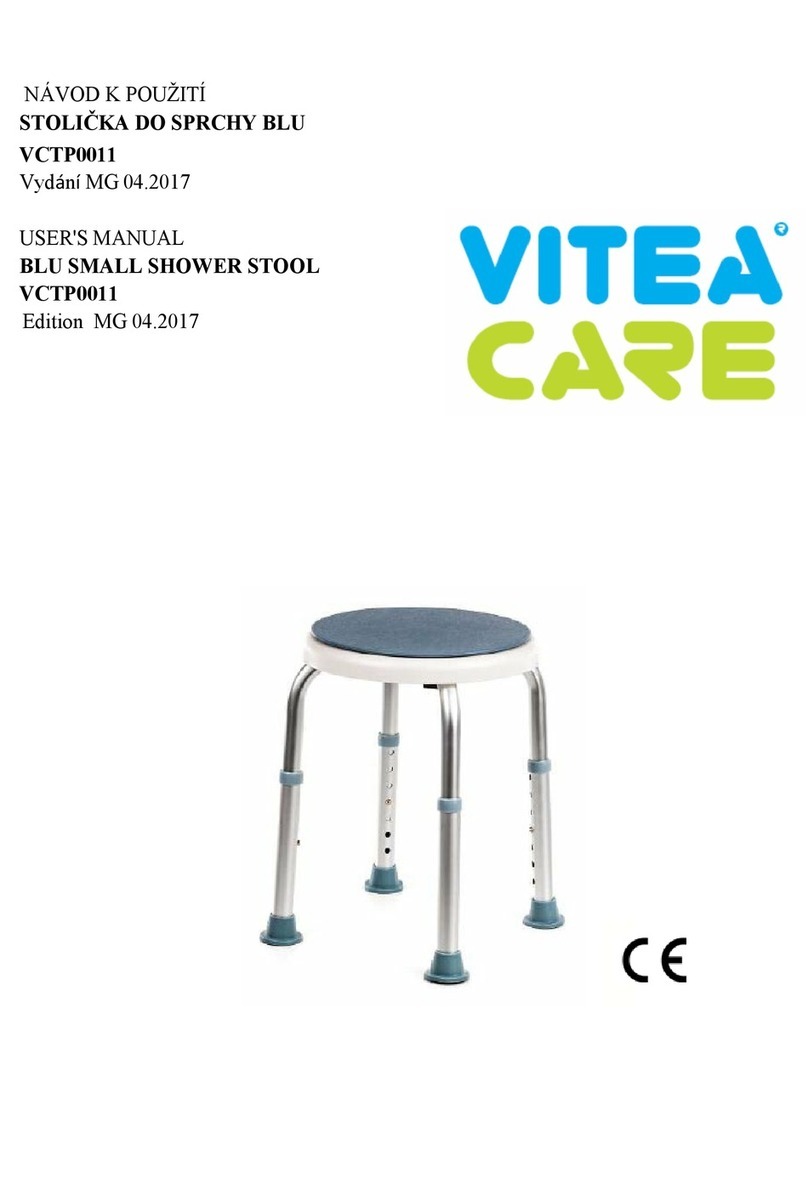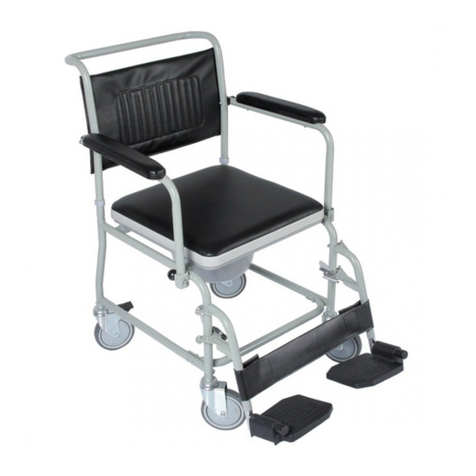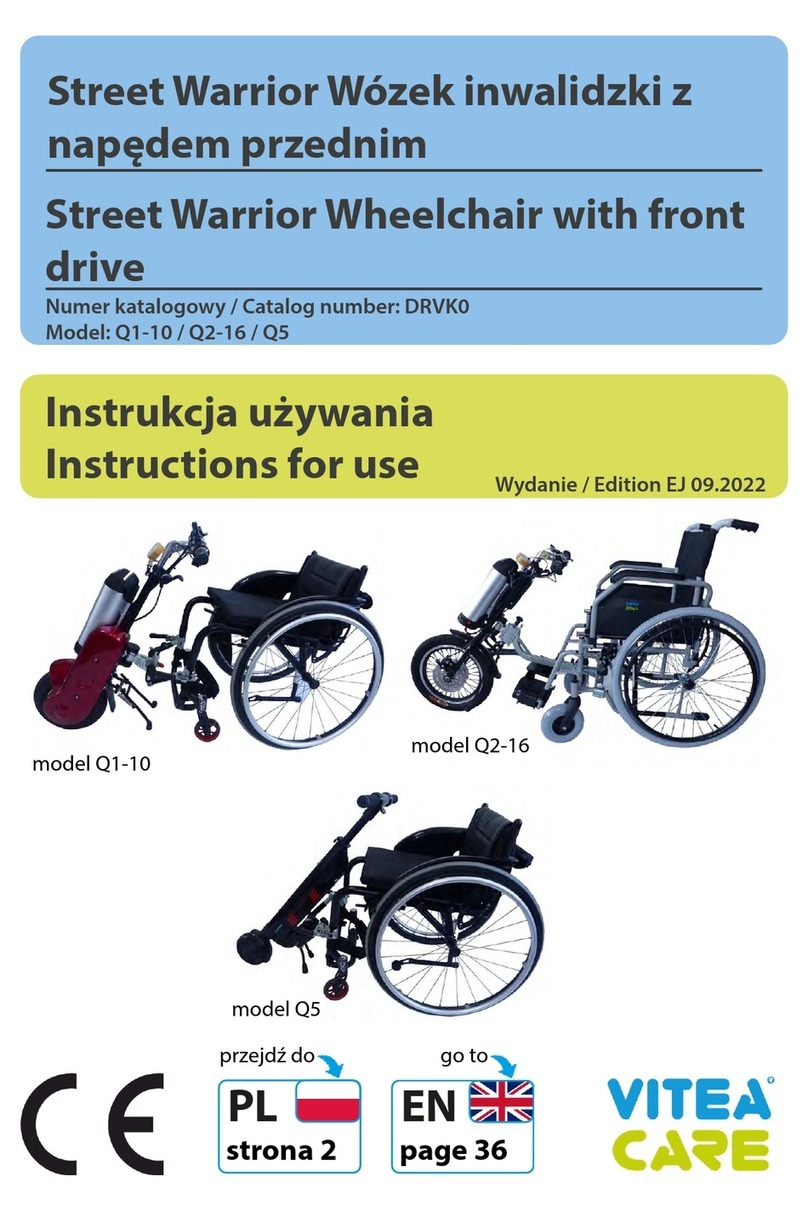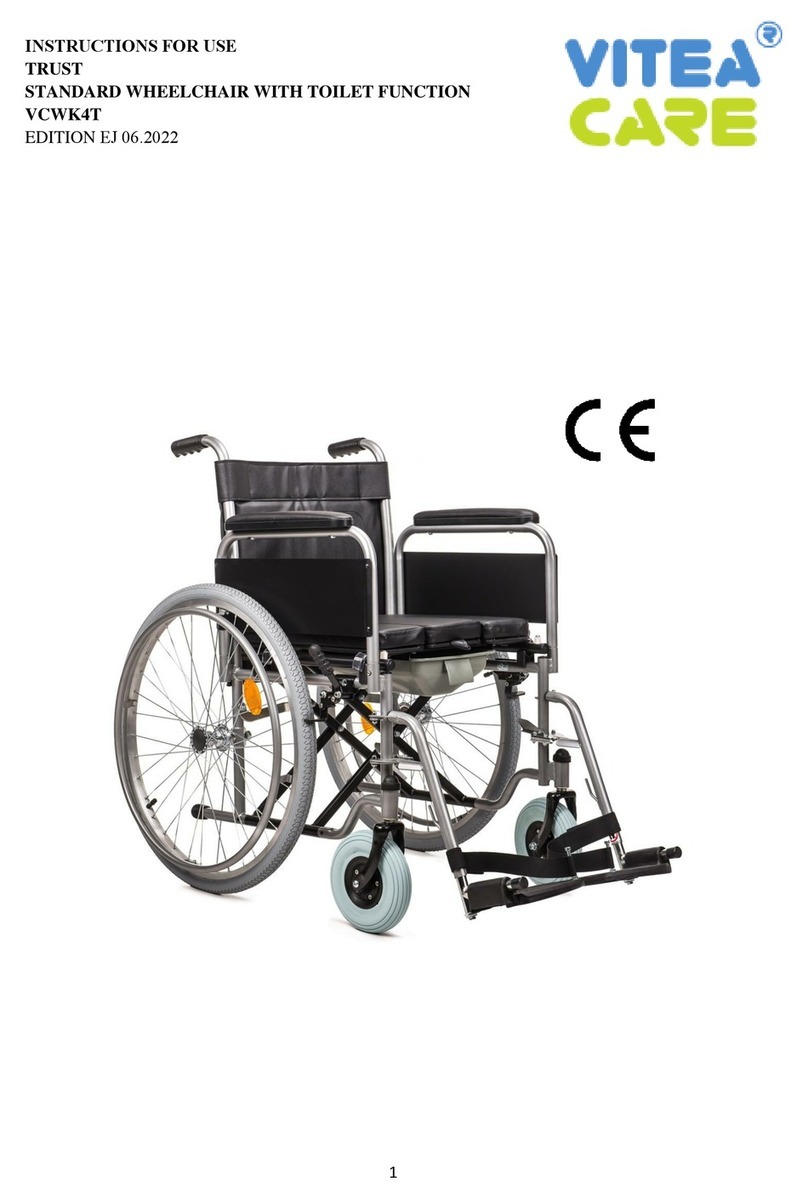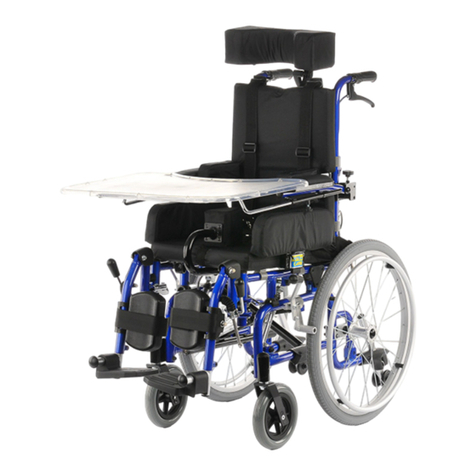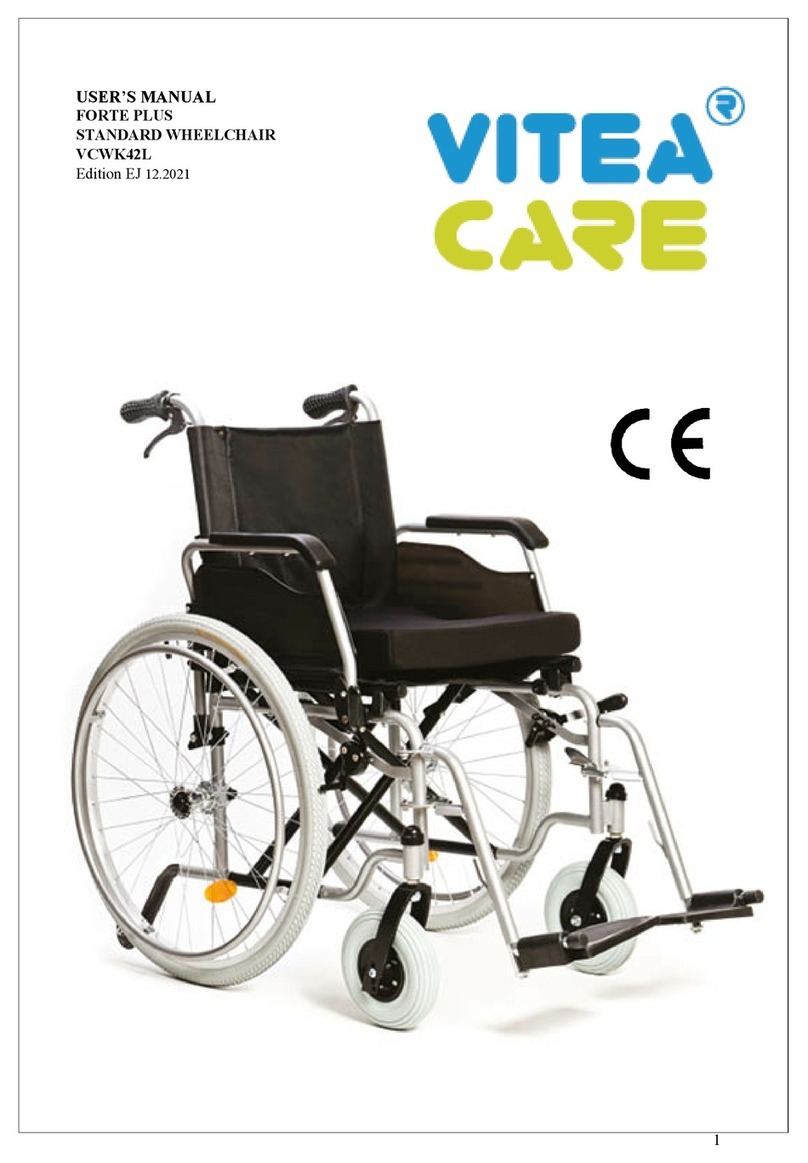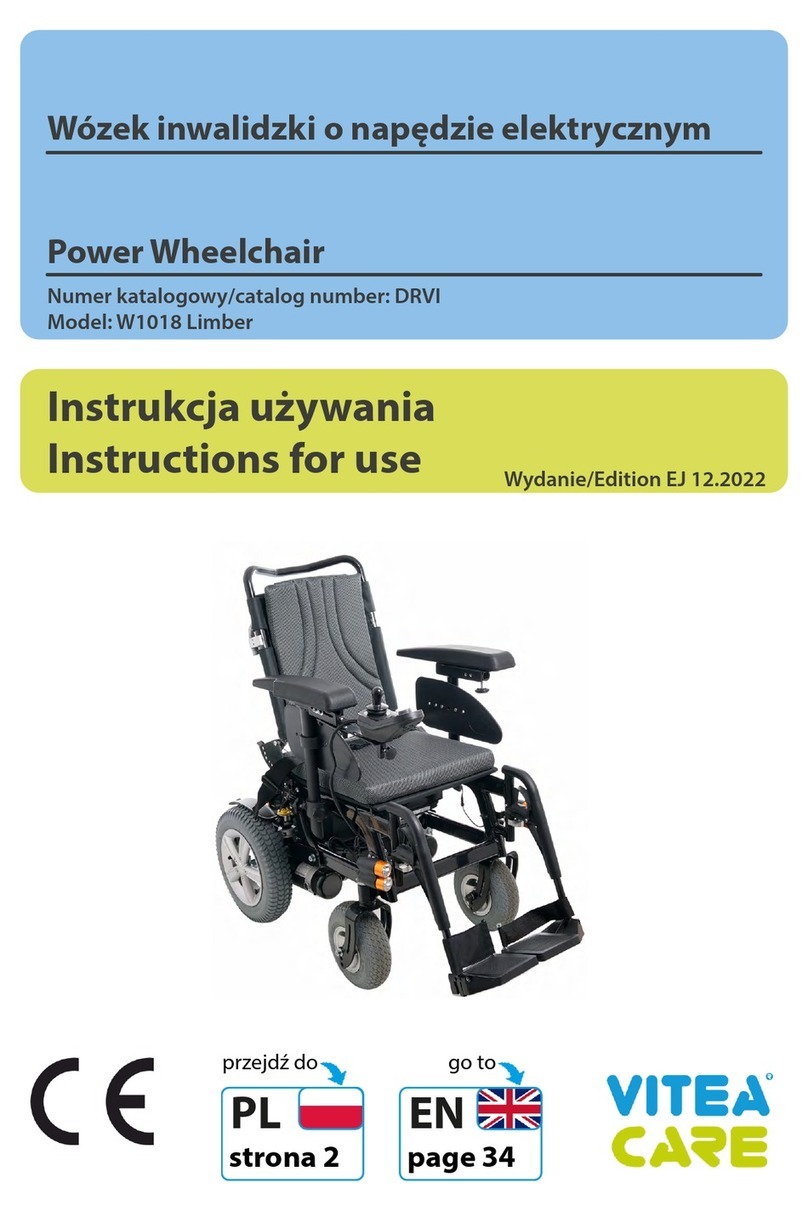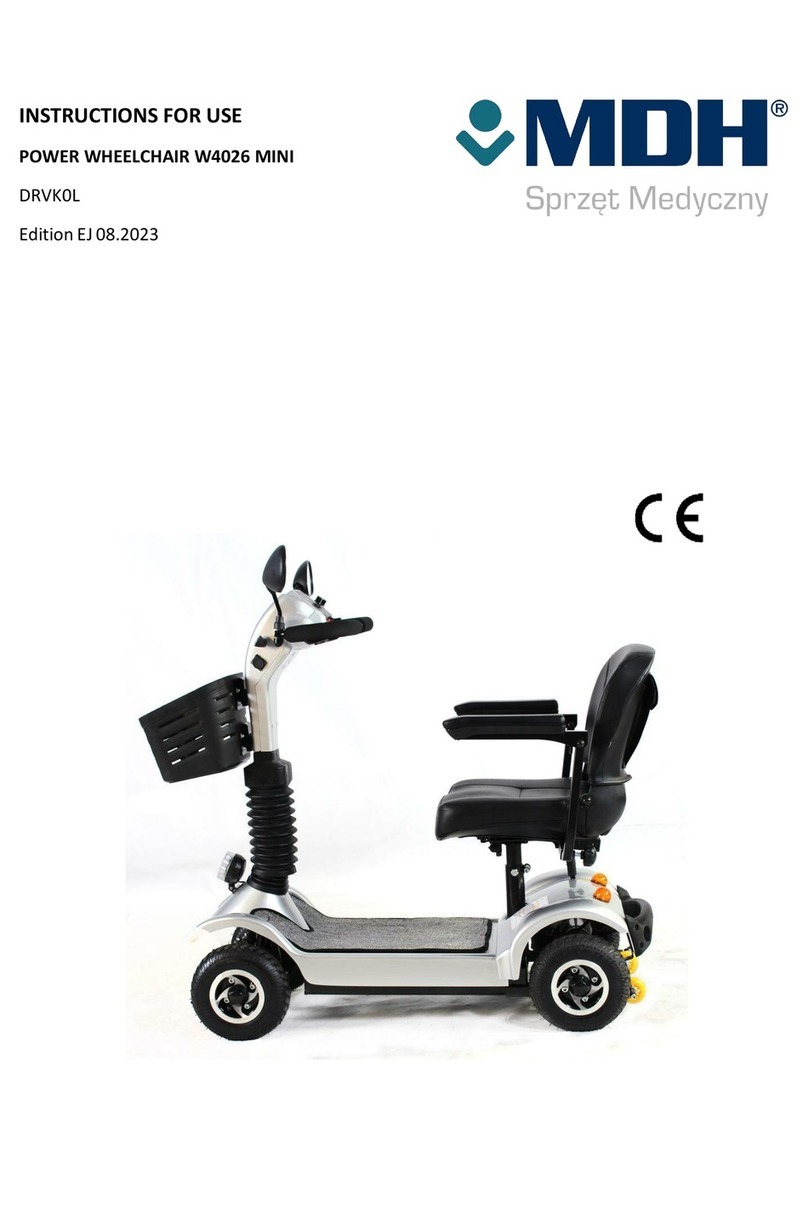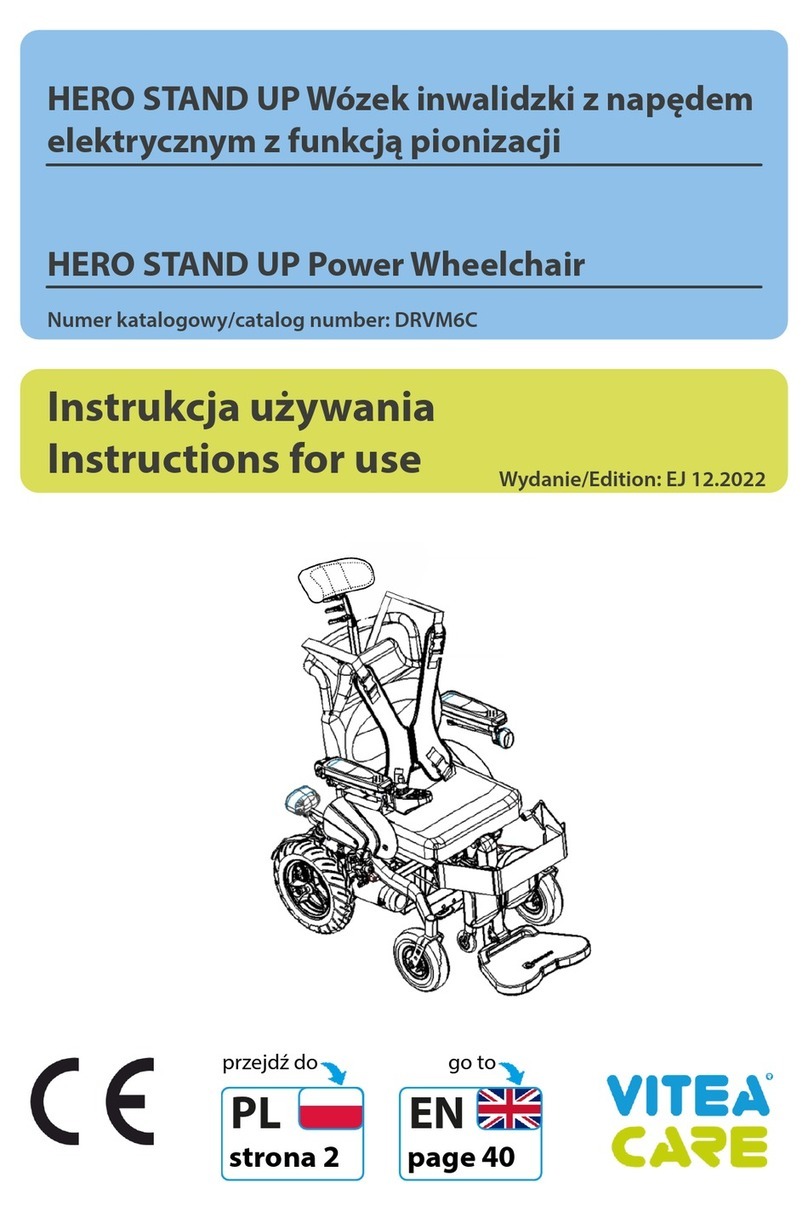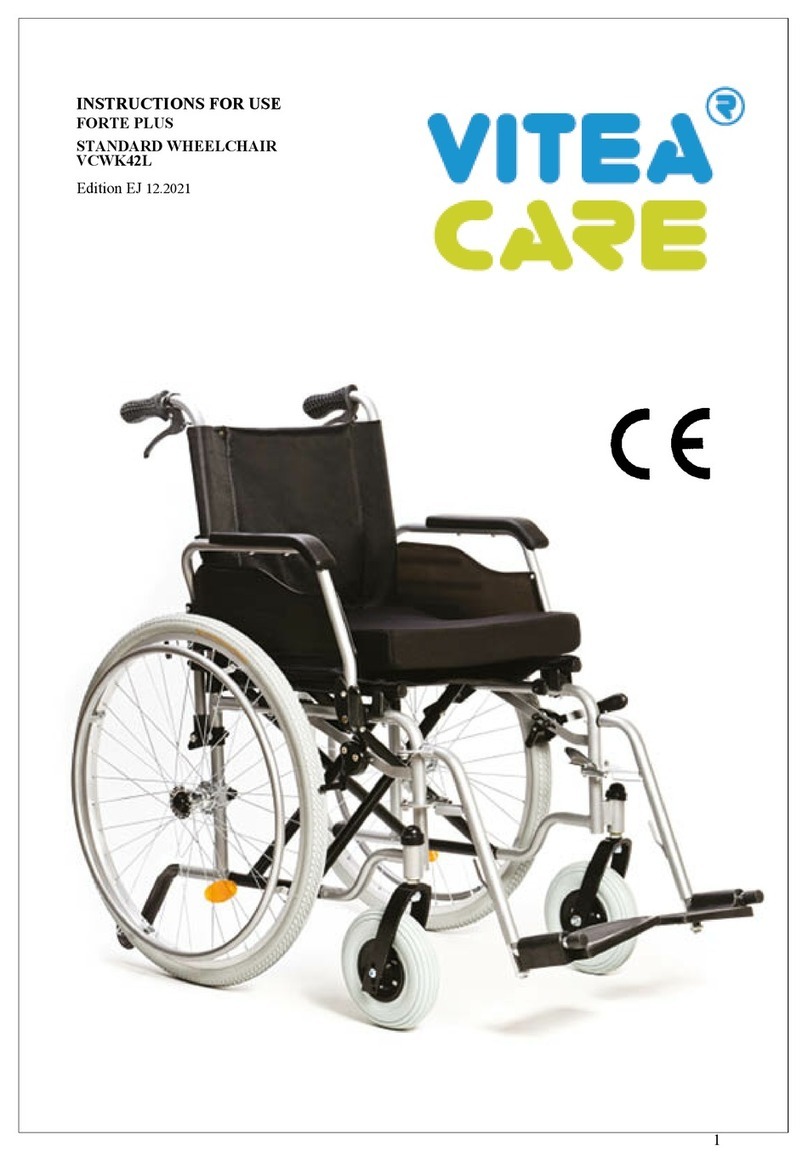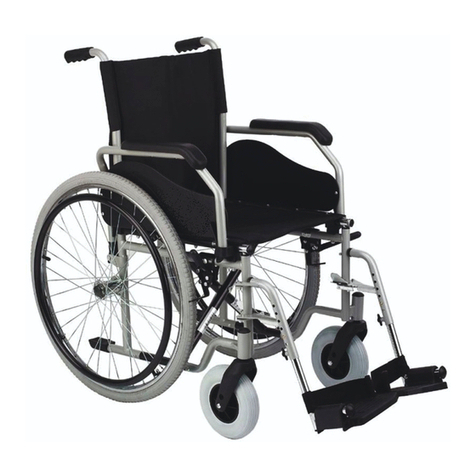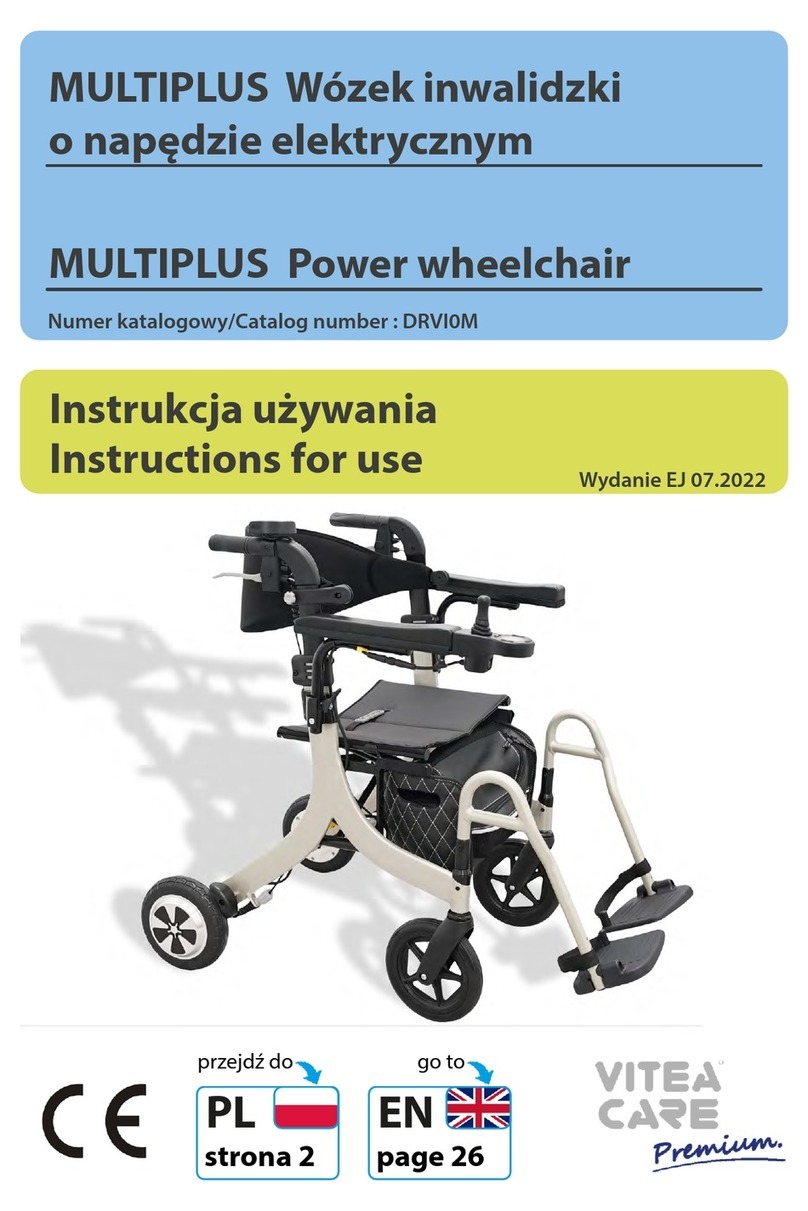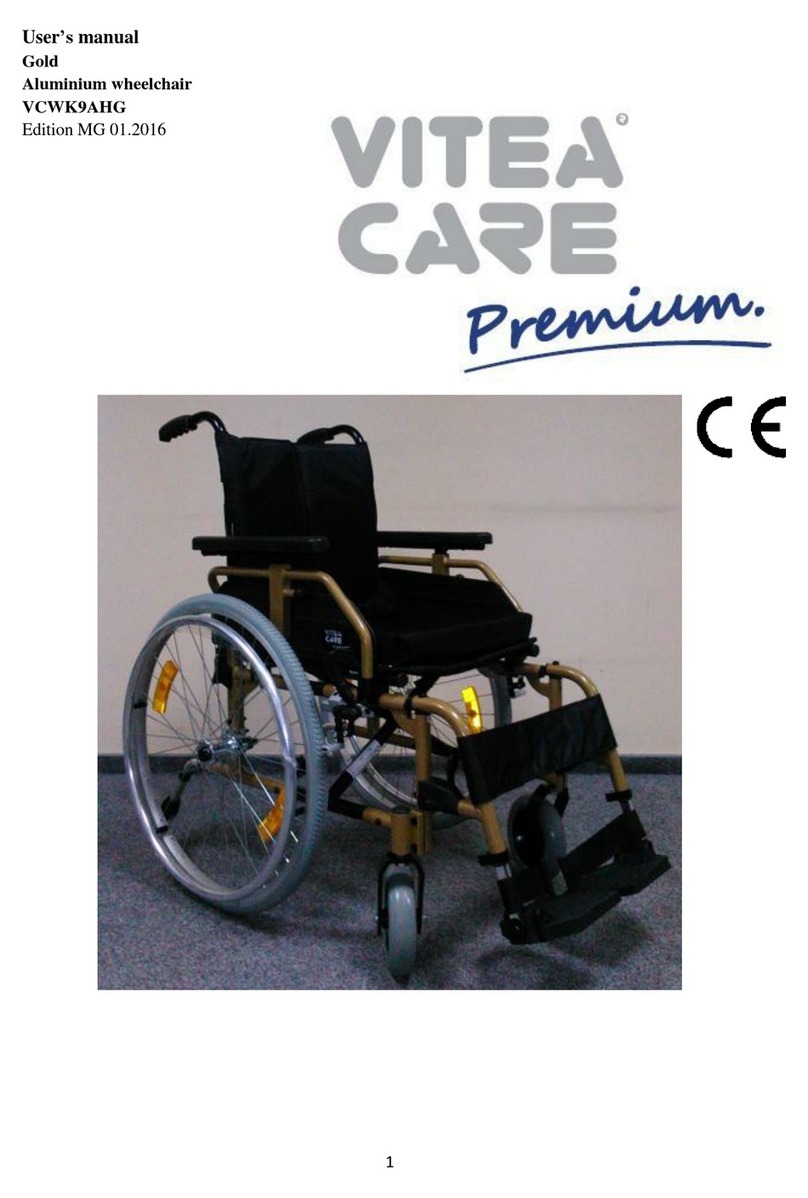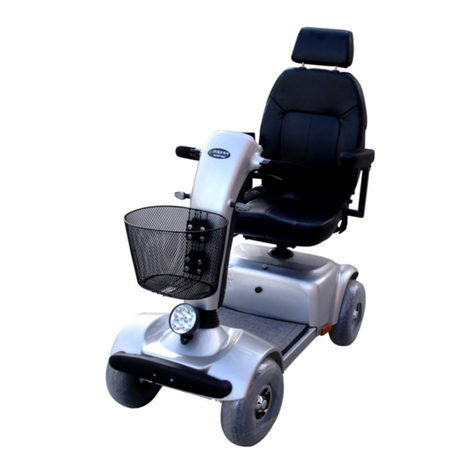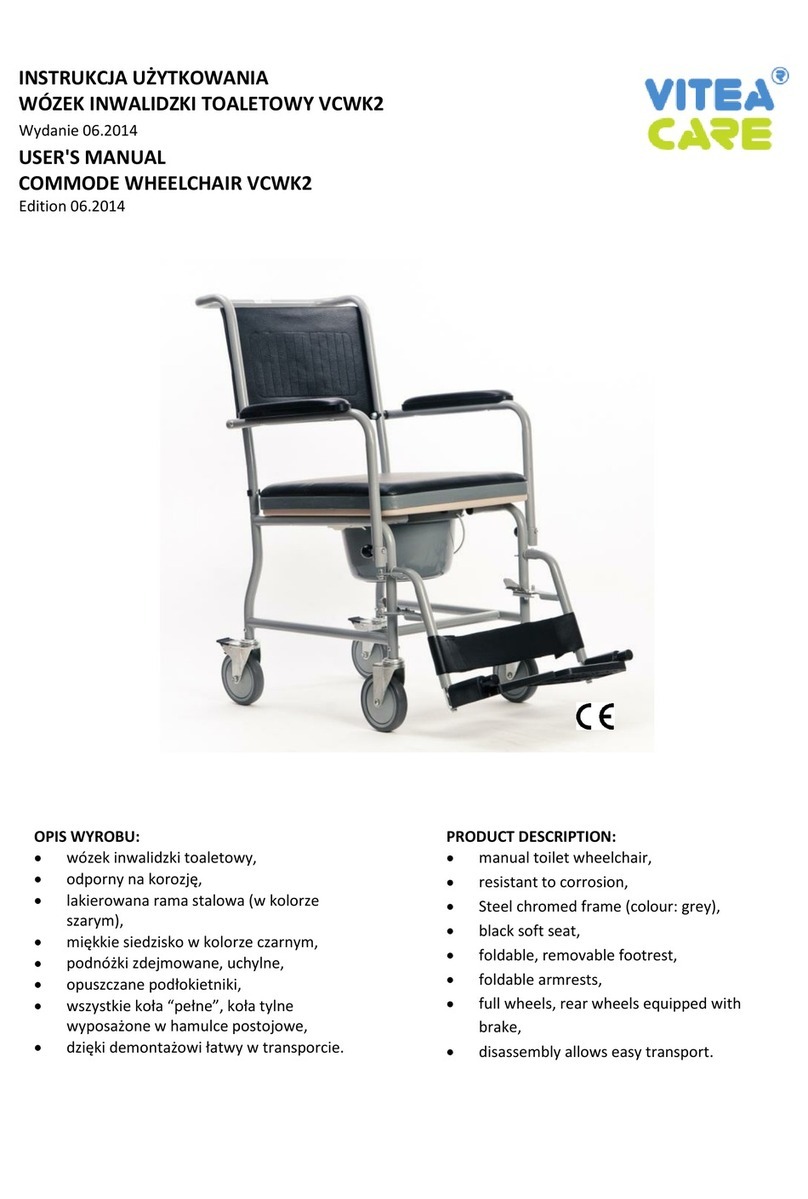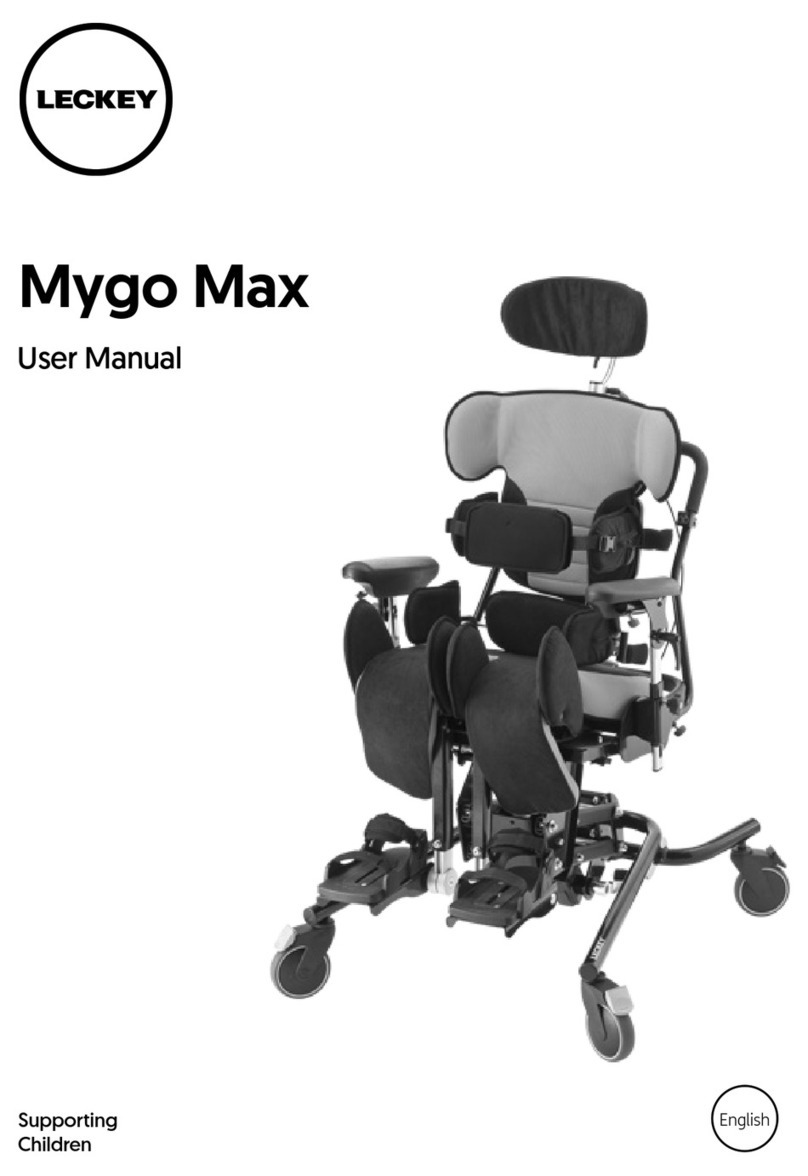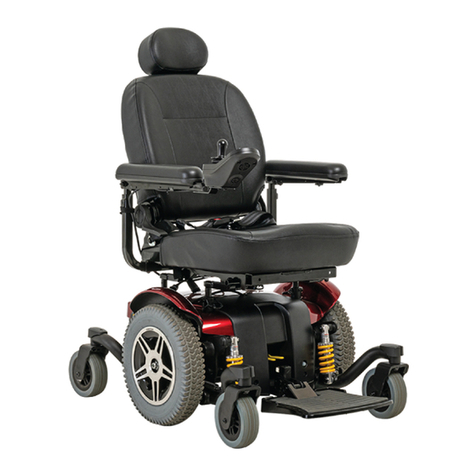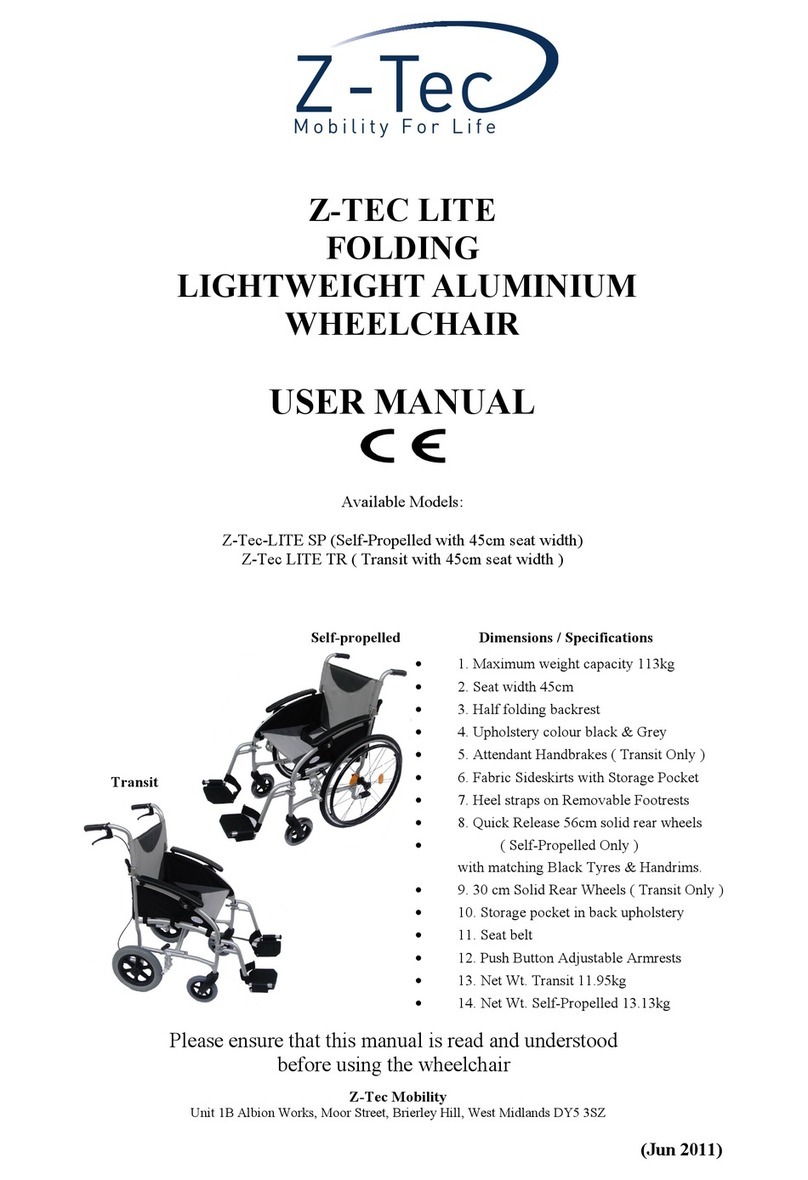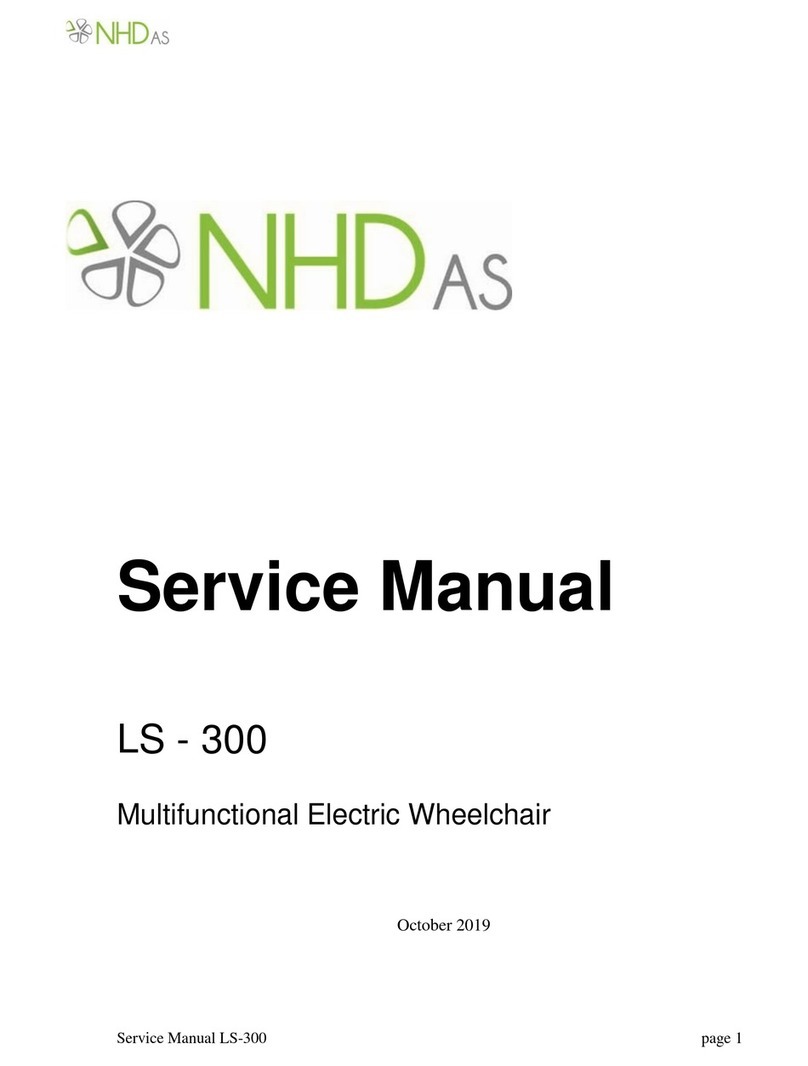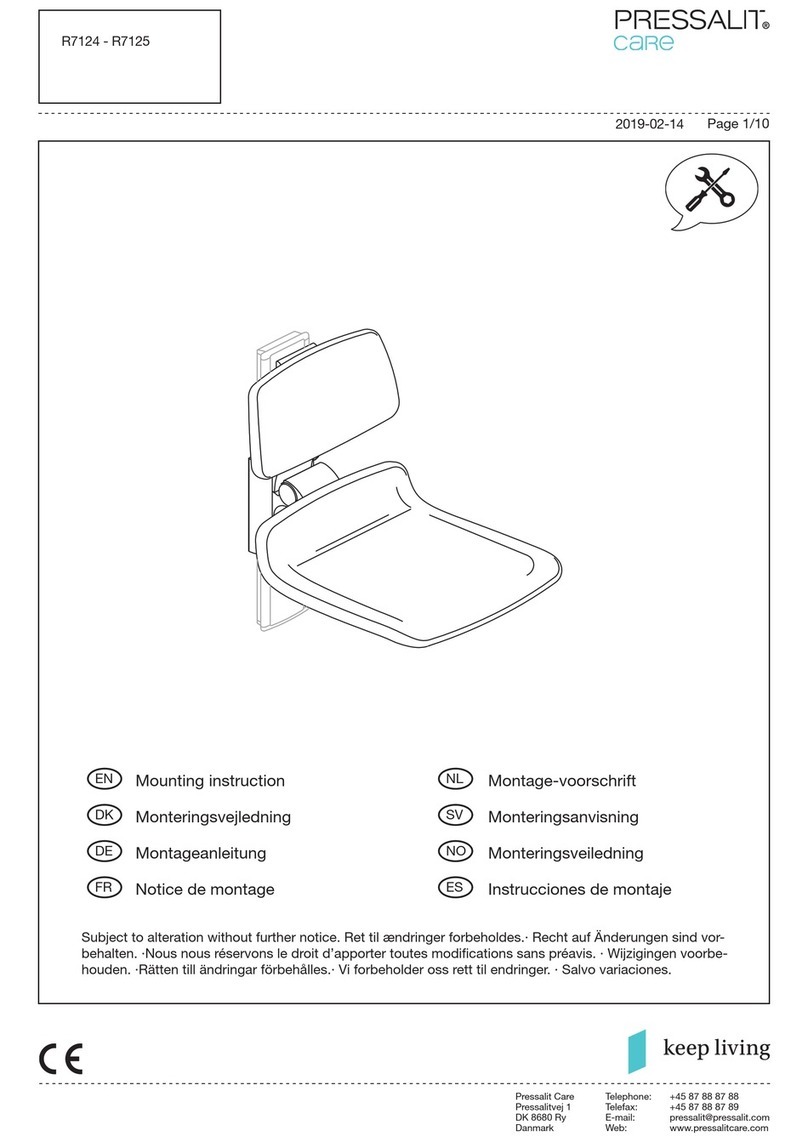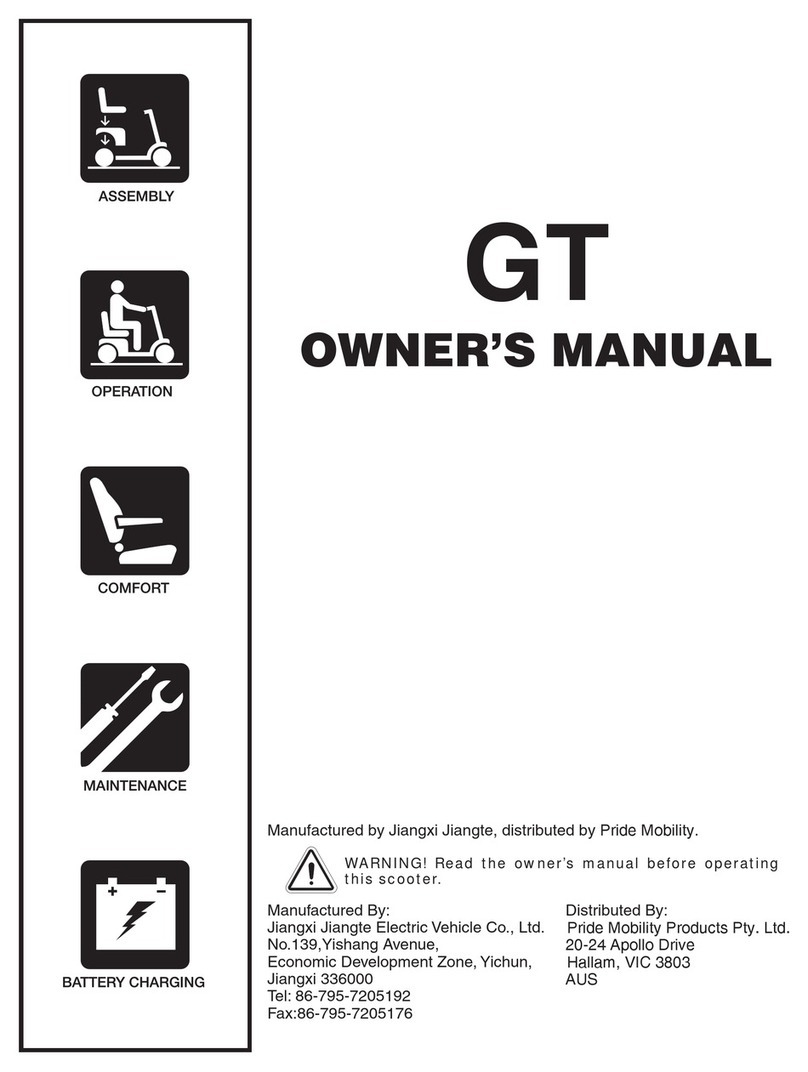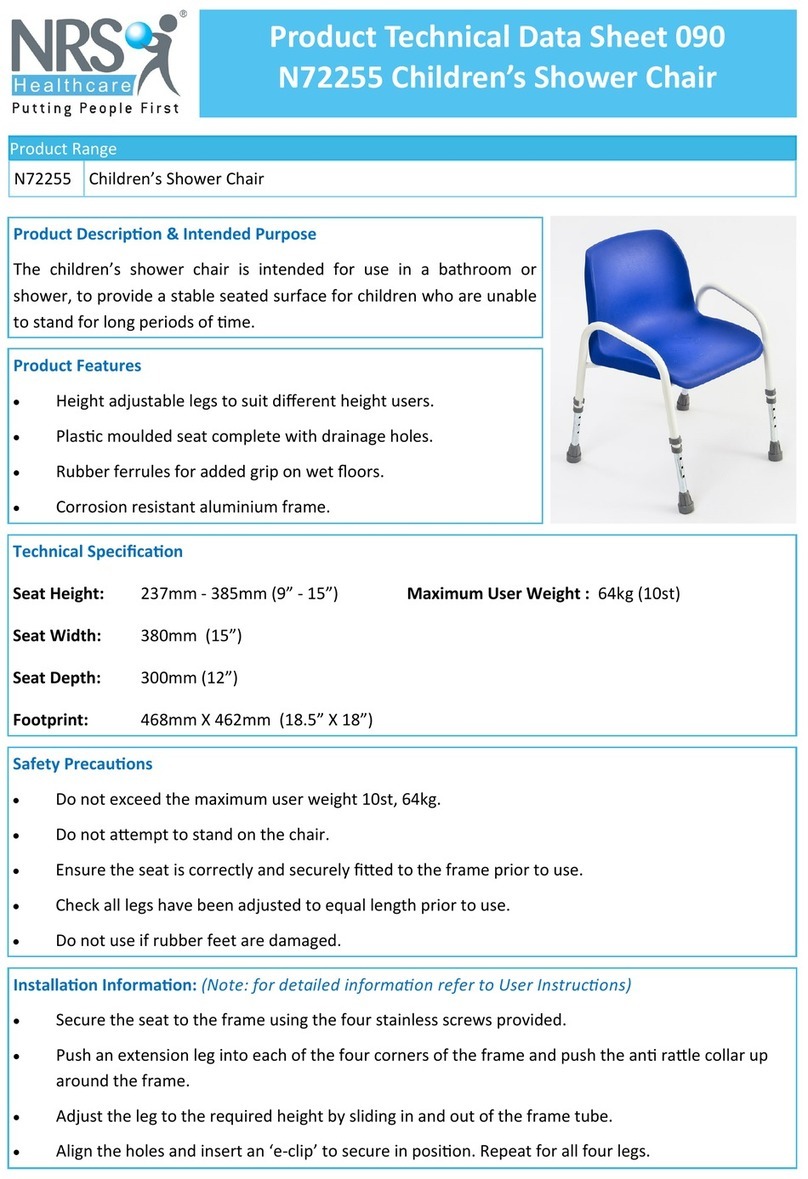
r) Wózek przeznaczony jest dla osób o wadze do
115 kg.
s) Wózek powinien zawsze dać się łatwo składać i
rozkładać. W przypadku problemów ze
złożeniem należy ponownie zapoznać się z
instrukcją, lub skontaktować się z wytwórcą.
t) Poruszając się po powierzchniach pochyłych
należy zachować szczególną ostrożność.
Maksymalne dopuszczalne kąty nachylenia
podłoża w górę i w dół wynoszą 5%.
u) Hamulce nie służą do spowalniania wózka w
trakcie ruchu, należy ich używać wyłącznie aby
nie dopuścić, do niepożądanych ruchów wózka.
v) Oba hamulce powinny być właściwie
wyregulowane. Nieprawidłowe ustawienie
jednego z hamulców, skutkujące
zablokowaniem tylko jednego koła tylnego, co
na dużych pochyłościach może być przyczyną
trudnego do opanowania obrócenia się wózka
wokół koła zahamowanego.
w) Należy regularnie kontrolować ciśnienie w
oponach. Przy zbyt niskim ciśnieniu w oponach
niż zalecane, skuteczność działania hamulców
może znacznie się zmniejszyć!
x) Podczas podnoszenia przedmiotów z podłogi
nie należy sięgać do tyłu, ponieważ grozi
przewróceniem się do tyłu.
y) Podczas sięgania przedmiotów należy unikać
nadmiernego wychylania się z wózka gdyż
grozi to upadkiem.
z) Nie należy sięgać przedmiotów z podłogi z
przodu, jeżeli wymaga to wysunięcia się z
wózka.
aa) Wszelkie czynności takie jak wsiadanie,
zsiadanie, zmiana pozycji pacjenta, postój
wózka wymagają zablokowania hamulców kół
jezdnych.
bb) Nie należy pozostawiać pacjenta w wózku
(nawet przy zaciągniętych hamulcach) na
zjazdach, rampach, półpiętrach itp.
cc) Należy każdorazowo po montażu kół sprawdzić
czy zadziałała blokada osi złącznej koła, przy
montażu powinno być słyszalne
charakterystyczne kliknięcie zatrzasku,
dodatkowo należy silnie szarpnąć koło bez
wciskania
dd) Używanie hamulca postojowego podczas jazdy
może grozić wypadkiem ze wszystkimi
konsekwencjami
w) Both brakes should be properly adjusted. Incorrect
setting one of the brakes, results with blocking
only one rear wheel. On large slopes, it can cause
difficulty to control the rotation the wheelchair
around the wheel stopped.
x) Regularly check the tire pressure. With too low tire
pressure than recommended, the brake
performance can be significantly reduced!
y)
While reaching objects, avoid excessive leaning
out the wheelchair because it can cause a fall (to
the side, front, back).
z)
In order to avoid accidental rolling off the
wheelchair, always put on the brakes when the
stroller is stopped, when patient get in, get off,
while changing the position.
aa)
Do not leave the patient in the wheelchair (even
with tu
rned on both brakes) on the descents,
ramps, landings, etc.
bb)
It is necessary to check after each wheel mount if
wheel axle connector lock works properly. While
mounting should hear “click” of the latch. Pull
strongly the wheel to check if it is installed
correctly.
cc) Using the parking brake while driving may result
with an accident with all its consequences.
dd)
After each wheelchair adjustment, it is always
necessary to check the correct operation of the
brake.
ee) Oil, grease, water or other chemic
that brakes may have reduced effectiveness.
ff) Strength of the breaking intensity may be reduced
after long exploitation of the wheelchair. You are
allowed to adjust breaks yourself. In order to do
that you must loosen the screws locking the
position of the break, move the mechanism of the
break towards the wheel so that the wheel will not
rotate when break will be on again (try the
adjustment with the user sitting on the wheelchair).
After final adjustment secure back the mechanism
with the screws.
gg)
It is extremely important to keep all wheelchairs
components clean in order to maintain the product
parameters.
hh)
Storing the wheelchair in areas with very high
humidity (baths, laundry, etc.) or in the open air,
also the lack of hygiene ca
operating parameters and aesthetic of the product.
9




















